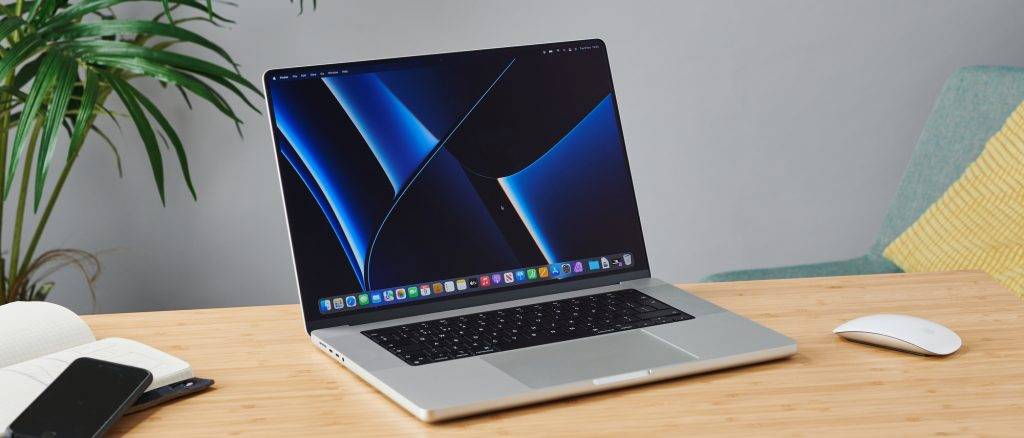
今天凌晨,苹果全球营销高级副总裁 Greg Joswiak 发布了一条推文,正式官宣了苹果新品即将发布:

五个「m」,加上动图里的「V」字笔记本剪影,就差把「M5 MacBook Pro」几个字公之于众了。
不过苹果的新品可不止这一款,有爆料称,接下来苹果将开启「周更」模式,一周推出一款新品,持续四周。
第一周:M5 MacBook Pro,但只有 M5
根据之前的爆料,搭载 M5 系列处理器的 MacBook Pro 原本定于明年年初进行发布,不过苹果已经改变了计划,将在本周内发布 M5 MacBook Pro。
但很大概率我们在今年只会见到 M5 基础款的 MacBook Pro 新品,M5 Pro、M5 Max 版本依旧要等到明年年初上市。
发布节奏的变更,一部分原因可能是台积电产量跟不上,也有可能是因为苹果想要提振基础款 MacBook Pro 的存在感——在两位大哥的衬托下,基础款 MacBook Pro 几乎年年都是「小透明」,讨论度和销量都不高。

M5 芯片采用 A19 Pro 同款台积电 3nm 制程 N3P 节点打造(另有说法是前代的 N3E),MacBook Pro 上的 M5 大概率会是 10 CPU + 10 GPU 的配置。
根据此前全球首曝 M5 iPad Pro 的跑分来看,M5 对比 M4 在 GPU 上的提升更显著,CPU 则有 15% 左右的性能提升。
除了 CPU 和 GPU 的提升,有爆料称 M5 在能耗表现上也会有 10% 的提升,并将配备更先进的神经网络引擎,提升提高带有 AI 类功能应用的体验,比如修图软件、游戏插帧,以及 Apple 智能。
M5 MacBook Pro 预计也只是一次单纯的「换芯」升级,继续沿用当前的模具,不过从 Joswiak 官宣新品的动图来看,MacBook Pro 很可能会和这几年的苹果新品一样获得新的蓝色配色,可能会更接近 iPhone 17 Pro 那种更深邃的蓝色。

还有一些预测,认为 M5 MacBook Pro 可能会换用苹果全新自研的 N1 通讯芯片,支持蓝牙 6 和 Wi-Fi 7。越多元器件自主化,意味着利润空间越大。
总体来说,今年的 MacBook Pro 还是一次常规更新,而明年年底发布的 M6 MacBook Pro,很有可能会是近年来苹果笔记本电脑产品线的一次重大变革:换用无刘海可触控 OLED 屏幕,机身将更轻薄,并有可能支持 5G 蜂窝网络。
和 M5 MacBook Pro 一同发布的还有苹果全新的 Studio Display,将采用 mini-LED 显示,搭载 A19 Pro 处理器,可能会搭载一个轻量级的智能家居系统。

除了 M5 MacBook Pro,传闻已久的「廉价版」A 系列芯片 MacBook 也有可能会一同发布,将采用 A18 Pro/A19 Pro 处理器,采用 13 寸 MacBook Air 同款模具,价格 699 美元,折合人民币还不到 5000 元。
第二周:只差正式开卖的 M5 iPad Pro
由于俄罗斯博主 Wylsacom 已经偷跑开箱全新 iPad Pro,这款产品的外观和芯片信息已经处于公开状态,就等着苹果发售了。

目前,M4 iPad Pro 一些型号在美国官网的缺货情况尤为明显,这一般来说就是迭代新品即将发布的信号。美国运营商 AT&T 官网甚至已经有了「iPad Pro M5 预购即将开启」的相关页面。

从外观上看,M5 iPad Pro 和上一代基本一致,延续了上一代的超薄铝金属机身和单摄像头,正面并没有传闻中的窄边框设计。

iPad Pro 上的 M5 芯片拥有 9 核心 CPU,与上一代保持一致,Benchmark 单核跑分 4133,多核 15437,对比 M4 分别约有 10% 和 16% 的提升。
而 GPU 方面,M5 挤了一大管牙膏:Benchmark Metal 跑分 74568,对比前代 55702 大幅上涨了 34% 左右。

除了 Benchmark,Wylsacom 也用 M5 iPad Pro 运行了安兔兔,跑分为 3137936 分,比前代高出了 8%。
偷跑的 iPad Pro 为 256GB 版本,Benchmark 显示配备运行内存 12GB,作为对比,M4 iPad Pro 的 256GB 和 512GB 配备了 8GB 运存。
视频没有公布 iPad Pro 的其他方面升级,目前还不清楚新 iPad Pro 是否如传闻中配备「双前置摄像头」设计。
虽然今年恰逢 iPad Pro 诞生十周年,但新的 M5 iPad Pro 在硬件上更多只是一次常规迭代,称不上「iPad Pro X」。
比起硬件参数,iPadOS 26 对于 iPad Pro 来说意义更加重大,虽然 iPad 依旧没能成为真正意义上的「电脑」,但比以往更具有生产力潜力。

第三周:新款 Vision Pro,但不是 Vision Pro 2
MacBook Pro 和 iPad Pro 不是唯一的 M5 新品,Vision Pro 头显也会用上这颗强大的处理器,取代目前的 M2。
有消息称,Vision Pro 将采用的是去年的 M4 芯片,但不管是哪一颗,对于目前的 Vision Pro 来说都算绰绰有余。
美国联邦通信委员会(FCC)最近公布的文件中,有一份提到了一款苹果设计的「头戴式设备」,配图基本证实了是 Vision Pro 新品。

但文件本身除了无线和传输测试结果外,几乎没有提供任何信息。
这个新品并非真正的「Vision Pro 2」,除了处理器,头显的其他硬件配置以及设计都不会进行更新,不过很可能会配备新的头带来改善佩戴体验,以及全新「深空黑」配色。

这个小改款也传递出一个信号:Vision Pro 2 将是一次变化非常大的迭代,但可能在两年内都不会问世。彭博社爆料,苹果已经基本暂停了所有 Vision 头显的开发,全力打造智能眼镜新品。
第四周:Apple TV 4K & HomePod mini
苹果在本周将自家的电视流媒体服务「Apple TV+」改名为「Apple TV」,并更新了应用图标,似乎也正是在为新款 Apple TV 盒子铺路。

全新的 Apple TV 4K 的也同样聚焦在性能上:从目前的 iPhone 13 同款 A15 芯片一跃到 A17 Pro,很可能是 iPad mini 同款,也就是比 iPhone 15 Pro 少一个 GPU 核心的版本。
这同样也很可能意味着,Apple TV 将获得 Apple 智能的支持。
A17 Pro 的强大性能,特别是图形方面更上一层楼的处理能力,很可能也将为 Apple TV 带来更多大型游戏的支持,尤其是那些有性能需求的 iOS 移植 3A 大作,让机顶盒直接变身游戏主机——相较手机来说,Apple TV 确实是更合适的游戏场景。

除了 A17 Pro,新款 Apple TV 还可能会搭载 iPhone Air 上初次亮相的蓝牙和 Wi-Fi 芯片 N1。
有网友猜测,既然流媒体改名为 Apple TV,那原本的「Apple TV」盒子,说不定会改名为「Apple Box」?
HomePod mini 也是一次常规的更新:从目前的 S5 芯片升级到 Apple Watch S9 同款的 S9 芯片,以及 N1 芯片,将支持 Wi-Fi 6E。
有消息称,苹果也将会增强新款 HomePod mini 的 Wi-Fi 连接性能,大幅减少目前产品上的延迟问题。

苹果正在进一步加强对元器件的把控力,而诸如 Apple TV、HomePod mini 这样的非核心产品线,正是一片绝佳的试验田。
结合此前关于苹果桌面机器人的爆料来看,或许在苹果未来的产品版图中,HomePod 这条产品线将会获得更加核心的位置。
还有一个 AirTag 2
从去年年底开始,几乎每一次苹果新品集体爆料都会提到 AirTag 2,但至今仍未发布,今年 10 月也是一个非常适合的时机。
AirTag 2 将采用第二代超宽带芯片,和当前的版本相比,预计将会提升 3 倍的跟踪距离。作为参考,搭载这个芯片的 iPhone 15 可以在 60 米范围内找到朋友。
由于第一代产品的安全争议,AirTag 2 也会加强内置扬声器的拆卸难度,以阻止不法分子改装后用于悄无声息地跟踪他人。
也有新的传言称,AirTag 2 将改进与 Apple Vision Pro 的集成,成为空间计算生态系统的一部分,但目前还没有具体的细节,很可能将会是利用 Vision Pro 的空间显示效果,在现实世界画面中直接标出 AirTag 的位置。

比起 9 月款款都可圈可点的新 iPhone,10 月份这波苹果新品要平淡不少,大部分都只是换芯升级。
特别是 MacBook Pro 和智能家居新品,基本可以确定明年苹果都有大动作,今年更像是过渡的一年。
你最期待上面哪一款苹果新品?欢迎在留言区告诉爱范儿,我们将会第一时间上手评测这些新品,敬请期待。
题图来自 Tech Radar
#欢迎关注爱范儿官方微信公众号:爱范儿(微信号:ifanr),更多精彩内容第一时间为您奉上。
爱范儿 |
原文链接 ·
查看评论 ·
新浪微博
